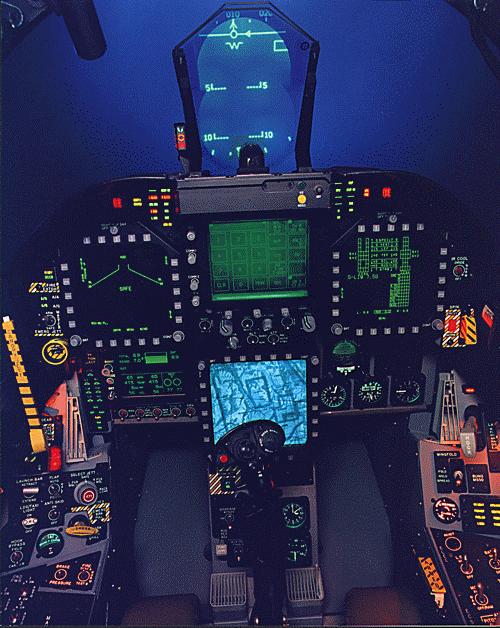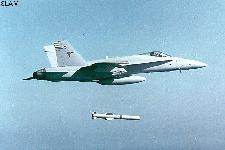

Features of the F/A-18 E/F Super Hornet:
90% Common F/A-18C/D Avionics: Avionics and software have a 90 percent commonality with current F/A-18C/Ds. However, the F/A-18E/F cockpit features a touch-sensitive, upfront control display; a larger, liquid crystal multipurpose color display; and a new engine fuel display.
34 in. Fuselage Extension: The fuselage is slightly longer - the result of a 34-inch extension.
Two Additional Multi-Mission Weapons Stations: Super Hornet has two additional weapons stations, bringing the total to 11. For aircraft carrier operations, about three times more payload can be brought back to the ship.
25% Larger Wing: A full 25 percent bigger than its predecessor, Super Hornet has nearly half as many parts.
35% Higher Thrust Engines: Increased engine power comes from the F414-GE-400, an advanced derivative of the Hornet's current F404 engine family. The F414 produces 35 percent more thrust and improves overall mission performance. Enlarged air inlets provide increased airflow to the engines.
33% Additional Internal Fuel: Structural changes to the airframe increase internal fuel capacity by 3,600 pounds, or about 33 percent. This extends the Hornet's mission radius by up to 40 percent.
Roll-out of the first Super Hornet occurred in September 1995, and it flew for the first time in November 1995, ahead of schedule and nearly 1,000 pounds under specified weight. In January 1997, the Super Hornet successfully conducted its initial sea trials on board the Navy's newest aircraft carrier, USS JOHN C. STENNIS (CVN 74).
The Navy is planning to procure a minimum of 548 Super Hornets, and possibly as many as 1,000. These numbers could vary depending on the progress of the Joint Strike Fighter Program. As part of the Quadrennial Defence Review (QDR) production of the Super Hornet was cut from 1000 to 548 units. Production of the aircraft commenced in FY 1997, and it is expected to attain initial operational capability (IOC) in FY 2001. Twelve aircraft were funded in FY 1997; procurement numbers increase to 20 in FY 1998, 30 in FY 1999, and reach a final maximum rate of 48 per year in FY 2001.